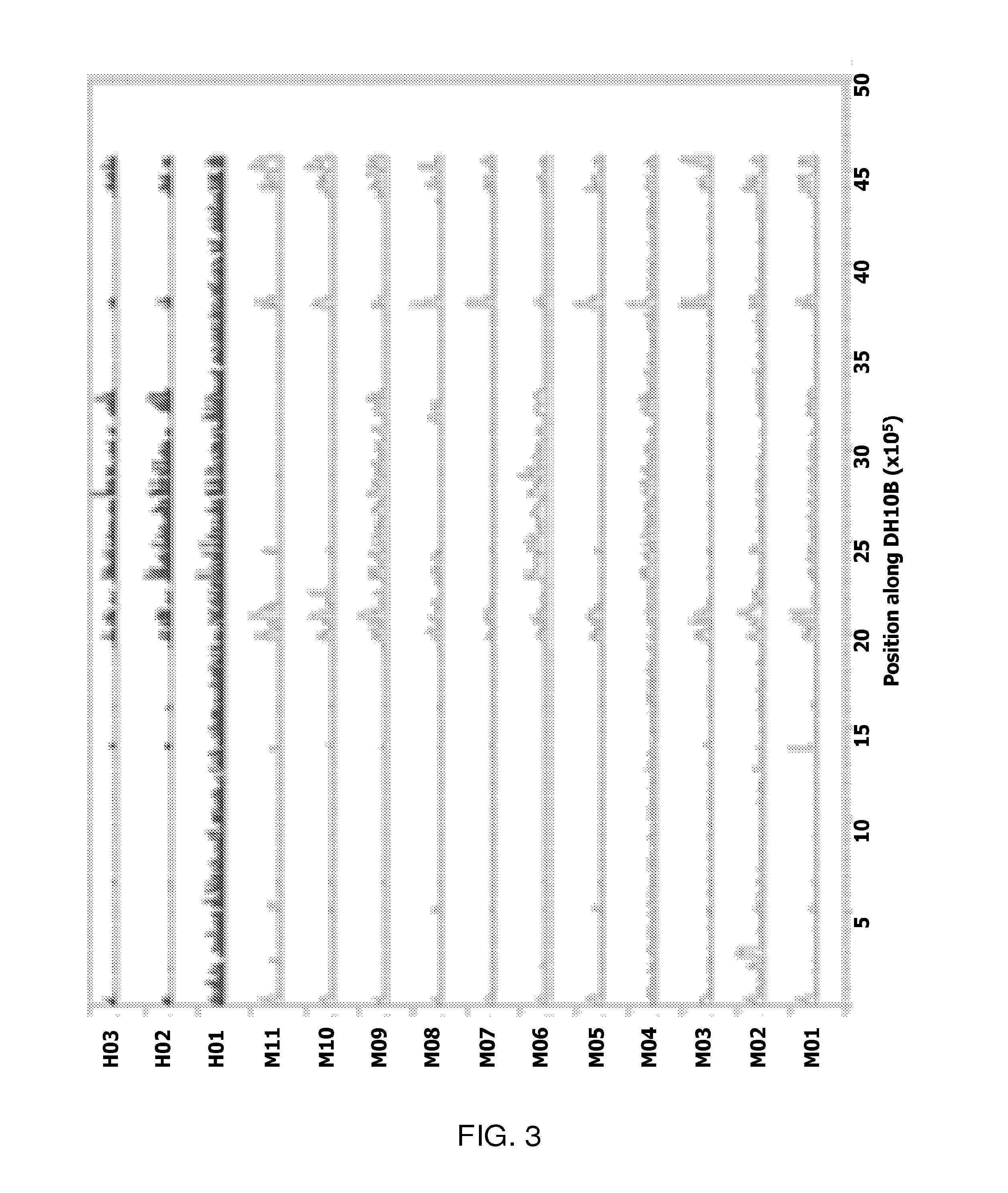Genomic approach to the identification of biomarkers for antibiotic resistance and susceptibility in clinical isolates of bacterial pathogens
a genetic approach and clinical isolate technology, applied in the field of microorganisms, cell biology, molecular biology, medicine, can solve the problems of increasing public health threat of multidrug resistance in bacterial pathogens, minimal availability in clinical diagnostic laboratories, and high cost of implementation into diagnostic environment, so as to eliminate empirical prescribing of antibiotics, improve diagnostic accuracy, and preserve antibiotic efficacy
- Summary
- Abstract
- Description
- Claims
- Application Information
AI Technical Summary
Benefits of technology
Problems solved by technology
Method used
Image
Examples
example 1
Overview of Exemplary Strategy
[0053]Since 1999, the inventors have collected more than 6,000 E. coli clinical isolates from patients treated for infection at Ben Taub General Hospital in the Texas Medical Center, located in Houston, Tex. These isolates represent fluoroquinolone MICs spanning seven orders of magnitude and a wide range of phenotypes as derived from hospital antibiogram data of drug susceptibility status to 22 antibiotics (Table 1). 164 non-clonal isolates from unique patients, representing all the resistance phenotypes existing in the collection, were stratified into 16 pools by k-means clustering, ranging in pool size from 2-33 isolates and in phenotype from susceptible to all tested antibiotics to nearly pan-drug resistant (Table 3). Genomes were represented within each pool at equimolar concentrations.
[0054]Pooled DNA was sequenced using the SOLiD 3 platform. Sequence reads were assembled into contigs. Contigs ranged in size from 3441 to 24859 bp and averaged betwe...
example 2
SNP Analysis
[0055]Mapped to the reference DH10B, a well-characterized, 4.6 Mb genome laboratory strain susceptible to all antibiotics, the inventors detected a total of 252,333 SNPs; approximately 9.4% were HQ. The inventors plotted these HQ SNPs for each pool along the position on the chromosome, starting with the origin of replication (FIG. 3). Several pools show low occurrence of SNPs across the chromosome while others showed specific regions of high SNP frequency. Pool H01, which had fluoroquinolone MICs of >1,000 μg / ml (Table 3), showed high frequency SNPs across the length of the genome and alone, accounted for 33% of the total number of SNPs detected. This extremely high divergence suggests that H01 is highly divergent from typical E. coli, despite passing biochemical tests. SNP analysis was not possible with this high divergence, so H01 was omitted from the rest of this section. Below the inventors describe the analysis of its genome sequence.
[0056]Given the extremely high s...
example 3
De Novo Analysis
[0062]Contigs that did not map to the two reference genomes were used for de novo assembly. Using BLAST, these contigs were matched to currently known genes in the E. coli pangenome, as well as sequences from other bacterial species, plasmids, and phages.
[0063]Nine cryptic prophages were recently reported to play important physiological roles in growth, biofilm formation, stress response, and antibiotic resistance in a K12 strain. The inventors investigated the presence and prevalence of prophage sequences in the pools. Surprisingly, the prophage sequences were overall poorly covered relative to the surrounding regions of the genome / overall coverage of the full genome. Particularly, the prophage implicated in quinolone resistance, ras, was one of the least detected in most pools.
[0064]Novel sequences composed ˜3% of the unmapped data and may be new resistance genes or become part of the genomic fingerprint of their pool.
[0065]Pool H01 contained only 2 isolates, but w...
PUM
| Property | Measurement | Unit |
|---|---|---|
| Electrical resistance | aaaaa | aaaaa |
Abstract
Description
Claims
Application Information
 Login to View More
Login to View More - R&D
- Intellectual Property
- Life Sciences
- Materials
- Tech Scout
- Unparalleled Data Quality
- Higher Quality Content
- 60% Fewer Hallucinations
Browse by: Latest US Patents, China's latest patents, Technical Efficacy Thesaurus, Application Domain, Technology Topic, Popular Technical Reports.
© 2025 PatSnap. All rights reserved.Legal|Privacy policy|Modern Slavery Act Transparency Statement|Sitemap|About US| Contact US: help@patsnap.com



